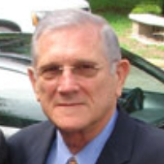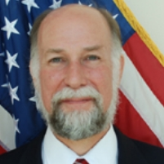Cuba
Lay of the Land: Cuba is a long, slender, crescent-shaped island on the north edge of the Caribbean, 90 miles south of Key West, Florida, and about 100 miles east of Mexico's Yucatán Peninsula. It is the most westerly of the West Indies and by far the largest. In general, the terrain is gently rolling, but there are mountainous areas, notably the Sierra Maestra in what was formerly Oriente Province in the southeast, Castro's base of operations during the revolution. Cuba has more than 2,000 miles of coastline, with many bays, inlets, and good natural harbors. Cuba's climate tends to the tropical, but the fact that it is an island moderates the temperature significantly.
Following the Spanish-American War, the US was split over its decision of what to do with Cuba. Some favored independence while others wanted blatant annexation. In a compromise, President William McKinley put Cuba under a 20-year US treaty, much to the chagrin of the Cuban independence movement. The treaty was negated a few years later when Theodore Roosevelt assumed the presidency after McKinley. Roosevelt had fought in the Spanish-American War and was sympathetic to Cuba’s move towards independence. He abandoned the treaty and Cuba attained formal independence on May 20, 1902. However, under the new constitution, the US retained the right to intervene in Cuban affairs and oversee its finances and foreign relations. The Platt Amendment leased Guantánamo Bay to the US.
After almost 50 years of hostilities, the United States and Cuba continue to have limited relations. There is a US mission in Havana, but it has minimal communication with the Cuban government. Since 1961, the official US policy towards Cuba has consisted of economic embargo and diplomatic isolation. The Bush administration has strongly enforced the embargo and strengthened travel restrictions. Americans with immediate family may visit once every three years for a maximum of two weeks, while the total amount of family remittances an authorized traveler may carry to Cuba is $300, reduced from $3,000 in 2004.
Since Congress relaxed the US embargo to allow food exports to Cuba, American trade has gradually increased in this sector. In 2006, US companies exported roughly $336 million worth of food and agricultural products to Cuba, according to the US International Trade Commission. In 2001 that figure was virtually zero. In 2007 the largest export was corn ($109 million), followed by meat and poultry ($84.8 million) and wheat ($70.1 million).
Obama’s “Moderate” Position Alienates Cuban-American Conservatives
The US State Department characterizes Cuba as being a “totalitarian state” with elections that have been “neither free nor fair.” The government exercises control through the Communist Party (CP) and its affiliated mass organizations, the bureaucracy, and the state security apparatus. The Ministry of the Interior exercises control over police, the internal security forces, and the prison system.
Herbert Goldsmith Squiers
Appointment: May 20, 1902
Presentation of Credentials: May 27, 1902
Termination of Mission: Left post, Dec 2, 1905
Appointment: Nov 29, 1905
Presentation of Credentials: Mar 1, 1906
Termination of Mission: Left post, Jan 5, 1910
Appointment: Dec 21, 1909
Presentation of Credentials: Mar 22, 1910
Termination of Mission: Presented recall, Oct 27, 1911
Appointment: Aug 12, 1911
Presentation of Credentials: Dec 18, 1911
Termination of Mission: Left post, Jun 28, 1913
Appointment: Jun 21, 1913
Presentation of Credentials: Aug 9, 1913
Termination of Mission: Left post, Dec 18, 1919
Appointment: Jun 30, 1919
Presentation of Credentials: [Jan 8, 1920]
Termination of Mission: Left post, Jun 17, 1921
Note: Formally received on Jan 8, 1920.
Appointment: Feb 10, 1923
Presentation of Credentials: Mar 5, 1923
Termination of Mission: Left post, May 28, 1927
Appointment: Nov 22, 1927
Presentation of Credentials: Dec 17, 1927.
Termination of Mission: Dec 23, 1927 Left post, Jun 1, 1929
Appointment: Oct 10, 1929
Presentation of Credentials: Nov 21, 1929
Termination of Mission: Left post, Apr 2, 1933
Appointment: Apr 24, 1933
Presentation of Credentials: May 11, 1933
Termination of Mission: Normal relations were interrupted on Sep 5, 1933; the new government of Cuba was still unrecognized by the United States when Welles left post on Dec 13, 1933.
Appointment: Feb 23, 1934
Presentation of Credentials: Feb 28, 1934
Termination of Mission: Left post, Mar 9, 1937
Appointment: Jul 13, 1937
Presentation of Credentials: Aug 23, 1937
Termination of Mission: Died at post, Dec 4, 1939
Appointment: Jan 12, 1940
Presentation of Credentials: Mar 8, 1940
Termination of Mission: Presented recall, Feb 8, 1942
Appointment: Dec 20, 1941
Presentation of Credentials: May 19, 1942
Termination of Mission: Left post, Apr 27, 1945
Appointment: May 21, 1945
Presentation of Credentials: Jul 24, 1945
Termination of Mission: Left post, May 22, 1948
Appointment: May 22, 1948
Presentation of Credentials: Jun 8, 1948
Termination of Mission: Left post, Feb 10, 1951
Appointment: Jun 20, 1951
Presentation of Credentials: Sep 20, 1951
Termination of Mission: Left post, Aug 9, 1953
Appointment: May 28, 1953
Presentation of Credentials: Oct 16, 1953
Termination of Mission: Left post, Jun 16, 1957
Appointment: Jun 3, 1957
Presentation of Credentials: Jul 23, 1957
Termination of Mission: Left post, Jan 19, 1959
Appointment: Feb 16, 1959
Presentation of Credentials: Mar 3, 1959
Termination of Mission: Left post, Oct 28, 1960
 Bolaños, Jorge
Bolaños, Jorge
Cuba does not maintain an embassy in the US. However it does have an Interests Section in the Swiss Embassy in Washington, DC.
- Table of Contents
- News
- Overview
- Basic Information
- History
- Newspapers
- History of U.S. Relations with Cuba
- Current U.S. Relations with Cuba
- Where Does the Money Flow
- Controversies
- Human Rights
- Debate
- Past Ambassadors
- Ambassador to the U.S.
- Embassy Web Site in the U.S.
- Comments
- Leave a comment
U.S. Ambassador to Cuba

Lay of the Land: Cuba is a long, slender, crescent-shaped island on the north edge of the Caribbean, 90 miles south of Key West, Florida, and about 100 miles east of Mexico's Yucatán Peninsula. It is the most westerly of the West Indies and by far the largest. In general, the terrain is gently rolling, but there are mountainous areas, notably the Sierra Maestra in what was formerly Oriente Province in the southeast, Castro's base of operations during the revolution. Cuba has more than 2,000 miles of coastline, with many bays, inlets, and good natural harbors. Cuba's climate tends to the tropical, but the fact that it is an island moderates the temperature significantly.
Following the Spanish-American War, the US was split over its decision of what to do with Cuba. Some favored independence while others wanted blatant annexation. In a compromise, President William McKinley put Cuba under a 20-year US treaty, much to the chagrin of the Cuban independence movement. The treaty was negated a few years later when Theodore Roosevelt assumed the presidency after McKinley. Roosevelt had fought in the Spanish-American War and was sympathetic to Cuba’s move towards independence. He abandoned the treaty and Cuba attained formal independence on May 20, 1902. However, under the new constitution, the US retained the right to intervene in Cuban affairs and oversee its finances and foreign relations. The Platt Amendment leased Guantánamo Bay to the US.
After almost 50 years of hostilities, the United States and Cuba continue to have limited relations. There is a US mission in Havana, but it has minimal communication with the Cuban government. Since 1961, the official US policy towards Cuba has consisted of economic embargo and diplomatic isolation. The Bush administration has strongly enforced the embargo and strengthened travel restrictions. Americans with immediate family may visit once every three years for a maximum of two weeks, while the total amount of family remittances an authorized traveler may carry to Cuba is $300, reduced from $3,000 in 2004.
Since Congress relaxed the US embargo to allow food exports to Cuba, American trade has gradually increased in this sector. In 2006, US companies exported roughly $336 million worth of food and agricultural products to Cuba, according to the US International Trade Commission. In 2001 that figure was virtually zero. In 2007 the largest export was corn ($109 million), followed by meat and poultry ($84.8 million) and wheat ($70.1 million).
Obama’s “Moderate” Position Alienates Cuban-American Conservatives
The US State Department characterizes Cuba as being a “totalitarian state” with elections that have been “neither free nor fair.” The government exercises control through the Communist Party (CP) and its affiliated mass organizations, the bureaucracy, and the state security apparatus. The Ministry of the Interior exercises control over police, the internal security forces, and the prison system.
Herbert Goldsmith Squiers
Appointment: May 20, 1902
Presentation of Credentials: May 27, 1902
Termination of Mission: Left post, Dec 2, 1905
Appointment: Nov 29, 1905
Presentation of Credentials: Mar 1, 1906
Termination of Mission: Left post, Jan 5, 1910
Appointment: Dec 21, 1909
Presentation of Credentials: Mar 22, 1910
Termination of Mission: Presented recall, Oct 27, 1911
Appointment: Aug 12, 1911
Presentation of Credentials: Dec 18, 1911
Termination of Mission: Left post, Jun 28, 1913
Appointment: Jun 21, 1913
Presentation of Credentials: Aug 9, 1913
Termination of Mission: Left post, Dec 18, 1919
Appointment: Jun 30, 1919
Presentation of Credentials: [Jan 8, 1920]
Termination of Mission: Left post, Jun 17, 1921
Note: Formally received on Jan 8, 1920.
Appointment: Feb 10, 1923
Presentation of Credentials: Mar 5, 1923
Termination of Mission: Left post, May 28, 1927
Appointment: Nov 22, 1927
Presentation of Credentials: Dec 17, 1927.
Termination of Mission: Dec 23, 1927 Left post, Jun 1, 1929
Appointment: Oct 10, 1929
Presentation of Credentials: Nov 21, 1929
Termination of Mission: Left post, Apr 2, 1933
Appointment: Apr 24, 1933
Presentation of Credentials: May 11, 1933
Termination of Mission: Normal relations were interrupted on Sep 5, 1933; the new government of Cuba was still unrecognized by the United States when Welles left post on Dec 13, 1933.
Appointment: Feb 23, 1934
Presentation of Credentials: Feb 28, 1934
Termination of Mission: Left post, Mar 9, 1937
Appointment: Jul 13, 1937
Presentation of Credentials: Aug 23, 1937
Termination of Mission: Died at post, Dec 4, 1939
Appointment: Jan 12, 1940
Presentation of Credentials: Mar 8, 1940
Termination of Mission: Presented recall, Feb 8, 1942
Appointment: Dec 20, 1941
Presentation of Credentials: May 19, 1942
Termination of Mission: Left post, Apr 27, 1945
Appointment: May 21, 1945
Presentation of Credentials: Jul 24, 1945
Termination of Mission: Left post, May 22, 1948
Appointment: May 22, 1948
Presentation of Credentials: Jun 8, 1948
Termination of Mission: Left post, Feb 10, 1951
Appointment: Jun 20, 1951
Presentation of Credentials: Sep 20, 1951
Termination of Mission: Left post, Aug 9, 1953
Appointment: May 28, 1953
Presentation of Credentials: Oct 16, 1953
Termination of Mission: Left post, Jun 16, 1957
Appointment: Jun 3, 1957
Presentation of Credentials: Jul 23, 1957
Termination of Mission: Left post, Jan 19, 1959
Appointment: Feb 16, 1959
Presentation of Credentials: Mar 3, 1959
Termination of Mission: Left post, Oct 28, 1960
 Bolaños, Jorge
Bolaños, Jorge
Cuba does not maintain an embassy in the US. However it does have an Interests Section in the Swiss Embassy in Washington, DC.
Comments
U.S. Ambassador to Cuba








Comments